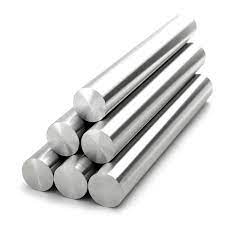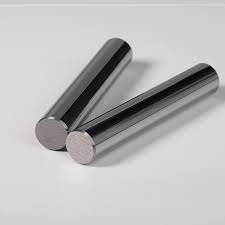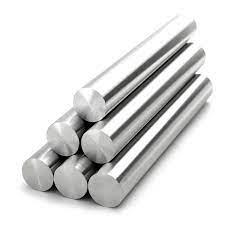Solid carbide rods are essential components in various industries, including metalworking, aerospace, and automotive. These rods are known for their exceptional hardness, wear resistance, and high thermal conductivity. In this blog, we will delve into the manufacturing process of solid carbide rods, providing insights into the intricate steps involved in their production.
I. Raw Materials and Preparation
To manufacture solid carbide rods, the process begins with carefully selected raw materials. Typically, tungsten carbide powder and cobalt powder are used. Tungsten carbide provides the hardness and wear resistance, while cobalt acts as a binder to hold the carbide particles together. The powders are thoroughly mixed and blended to achieve a homogeneous composition.

II. Powder Compaction
The blended powders are then subjected to a process called powder compaction. This involves placing the powder mixture into a die and applying high pressure to compress it. The pressure helps to consolidate the powder particles, ensuring a dense and uniform structure.
III. Pre-sintering
After compaction, the green compact is subjected to pre-sintering. This step involves heating the compact in a controlled atmosphere furnace to a temperature below the melting point of the carbide particles. Pre-sintering helps to remove any organic binders and volatile substances, as well as to enhance the strength and stability of the compact.
IV. Sintering
The pre-sintered compact is then subjected to the main sintering process. Sintering involves heating the compact to a temperature close to the melting point of the carbide particles. During sintering, the tungsten carbide particles bond together, forming a solid and dense structure. The cobalt binder melts and fills the gaps between the carbide particles, providing additional strength and toughness.

V. Machining and Grinding
Once the sintering process is complete, thehttps://www.diatooling.com/solidcarbide-rod.htmlare in their near-final shape. However, additional machining and grinding processes are required to achieve the desired dimensions and surface finish. Precision grinding machines are used to remove excess material and create the final shape of the rods. This step requires skilled operators and specialized equipment to ensure accuracy and consistency.
VI. Surface Treatment
To enhance the performance and longevity of solid carbide rods, various surface treatments can be applied. One common treatment is coating the rods with a thin layer of titanium nitride (TiN) or other coatings. These coatings provide additional hardness, reduce friction, and improve wear resistance. The coating process involves deposition techniques such as physical vapor deposition (PVD) or chemical vapor deposition (CVD).
VII. Quality Control
Throughout the manufacturing process, strict quality control measures are implemented to ensure the final product meets the required specifications. This includes dimensional checks, hardness testing, and visual inspections. Advanced techniques such as X-ray diffraction and scanning electron microscopy may also be employed to analyze the microstructure and composition of the rods.

Conclusion
The manufacturing process of solid carbide rods involves a series of intricate steps, from raw material preparation to final surface treatment. Each stage requires precision and expertise to produce high-quality rods with exceptional hardness, wear resistance, and thermal conductivity. Understanding this process provides valuable insights into the craftsmanship and engineering behind these essential components used in various industries.
Understanding the Composition and Properties of Solid Carbide Rods
